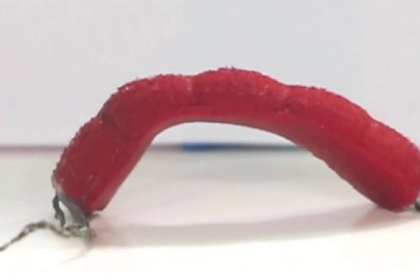Scientists from Scotland have created robots based on the mechanics of the movement of tapeworms. The development of engineers from the University of Glasgow will be able to be used in prosthetics, rescue operations and industry, the Evening Standard newspaper reports .
The authors of the development note that the robotic worms can stretch, increasing the length of the body by nine times. Also, worm robots are able to move based on their own form of proprioception — a sense of the relative position of the body and movements in living organisms. This feeling, for example, allows earthworms to navigate in space.
The characteristics of the worm robots will allow them to penetrate into hard-to-reach places where "traditional" robots will not be able to get. The creators of the worm robot suggest that their development will form the basis of a new generation of robots that will be able to independently explore hard-to-reach areas. For example, they can be used to search for minerals and in rescue operations — to search for survivors in the rubble.
Professor Ravinder Dahiya, an employee of the James Watt School of Engineering at the University of Glasgow, noted that the developments on flexible robots can form the basis of realistic prostheses. In addition, such robots can be adapted to carry heavy things of irregular shape.
The worm robots received built-in strain sensors, which are covered with a" skin " made of an elastic ecoFLEX material and a graphite paste developed at the University of Glasgow. At the two ends of the robot there are miniature permanent magnets that allow the robot to move on metal surfaces.
Sensors help the robot to "feel" movements based on the electrical resistance of the graphite paste. This indicator changes when a bend occurs on the body — the sensor records the achievement of a pre-set value, after which the body straightens. This cycle allows the robot to move like an earthworm.
Earlier, scientists from Italy found that the look of a humanoid robot can affect the decision-making process of people. The behavior of the participants of the experiment was evaluated during a game with an anthropomorphic robot. The researchers found that the decision-making process slowed down at the moments when the robot looked into the eyes of the participants in the experiment.
Daniil Irinin

